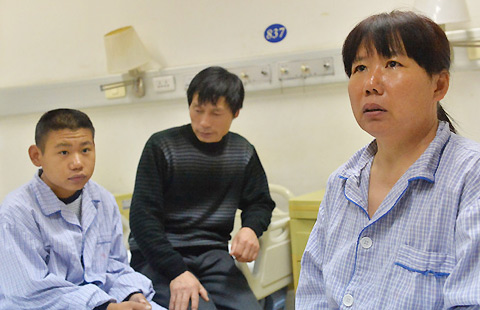Red Cross hopes to heal its reputation
By Shan Juan (China Daily) Updated: 2012-05-16 07:57Organization implements reforms following 'lavish lifestyle' claim, reports Shan Juan in Beijing.
After a year in which it has fought to repair its damaged reputation, the Red Cross Society of China is determined to leave the past behind and move on.
After initiating a series of reforms, the organization will become what the people expect it to be, according to Zhao Baige, executive vice-president.
|
|
|
A team of doctors from the Red Cross Society of Hebei province undertaking an emergency rescue drill. Provided to China Daily |
The China Red Cross found itself in the headlines for all the wrong reasons in June when Guo Meimei, who untruthfully claimed to be a Red Cross manager, posted photos online detailing her luxurious lifestyle.
The orange Lamborghini and white Maserati shown in the photos quickly ignited public suspicions of corruption.
"I was shocked that an organization with a history of more than 100 years could almost be wrecked by a 20-something woman in just three days," said Zhao on the sidelines of a Sino-African Red Cross and Red Crescent Forum held in Jiangsu province last week. However, she was adamant that the China Red Cross will survive.
In the opinion of Martin Faller, head of the East Asia Regional Delegation of the International Federation of Red Cross and Red Crescent Societies, the criticism, while unwelcome and unwarranted, may have served a purpose. "The Chinese Red Cross can reflect on itself and ask if it is transparent and mature enough. Do we deliver the right message to people?" he said.
"That's mainly what I've been doing since I began working for the Red Cross last year," said the fast-speaking Zhao.
A 'third way'
"We need to work out exactly what sort of organization the Red Cross is, and then get that message across to the people," said Zhao.
According to the Red Cross Law of the People's Republic of China, enacted in 1993 to provide legal protection to the China Red Cross and its work, the society is a specialist people's organization.
The model is the same as other people's organizations, such as trade unions, the Communist Youth League, and the Women's Federation on the Chinese mainland, according to Wang Rupeng, secretary-general of the China Red Cross.
 |
|
The Red Cross Society in Rong'an county in Guangxi Zhuang autonomous region donated milk powder for 1,400 children in the region's mountain villages in this 2010 photo. Tan Kaixing / for China Daily |
Public perception of the society seems confused, though, with some people believing it to be a government department, while others think it is a State-run charity.
Zhao was keen to emphasize that the Red Cross belongs to the people, but also serves as a strategic partner of the government in the field of humanitarian aid. "It's multifaceted and a provider of various services that the government can purchase," she explained, while stressing that the China Red Cross must be independent, neutral and transparent.
"For national societies of the Red Cross, the model varies from country to country," said Conrad Sauve, secretary-general and chief executive officer of the Canadian Red Cross. Like Zhao, he emphasized that the organization must maintain its independence to achieve its aims.
"For us, it's more like a company, independent from, but also supportive of, the government, particularly in the field of disaster relief," he said. "I'd like to see China's Red Cross evolve from being similar to a government agency to become an auxiliary to the government," he said, echoing calls from within China for the China Red Cross to move away from its subsidiary relationship with the government and become wholly independent to boost transparency and efficiency.
However, Zhao responded by saying that China cannot simply follow a model founded by others, "We can choose a 'third way' and mature in our own way".
- Newspaper backfires after snapping photo of singer in mortuary
- US to cooperate in identifying fugitives on the run
- Li to explain China to business titans at economic forum
- More HK women find a passion for mainlanders
- PLA officers placed under investigation
- Former Nanjing mayor stands trial
- Nuclear power safer than ever
- Domestic vaccine for polio licensed
- Vets battle to save stricken panda in Shaanxi
- Heavy fog disrupts air traffic in Xinjiang






